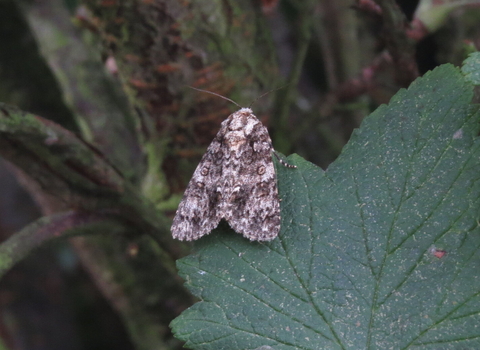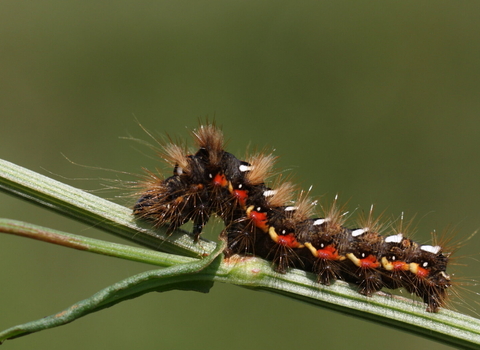
Knot grass © Tom Hibbert

Knot grass caterpillar © Vaughn Matthews
Knot grass
A common moth across most of the UK. The large, hairy caterpillars are often seen in late summer.
Enw gwyddonol
Acronicta rumicisPryd i'w gweld
Adult: May-July, also August-September in some areasCaterpillar: June-September (October in the south)
Gwybodaeth am rywogaethau
Ystadegau
Wingspan: 30-35mmCommon but considered vulnerable, due to recent rapid declines
Ynghylch
Knot grass moths are found throughout the UK in a wide variety of open habitats, including grasslands, heathlands, wetlands and gardens. The adults fly from May to July, though there is also a second generation in the southern half of England, which flies in August and September. They visit flowers at night and like many other moths can be attracted to lights.As the name suggests, the caterpillars of this widespread moth will sometimes feed on knotgrass plants, though not exclusively. They enjoy a wide variety of woody and herbaceous plants, including broad-leaved dock, plantains, bramble, hawthorn, common sorrel, heather, and purple loosestrife. Caterpillars can be seen between June and September, though caterpillars of the southern second generation are around in September and October. They spend the winter as a pupa, in a cocoon on the ground tucked away amongst leaf litter.
Although the knot grass is still common across the UK, it has declined significantly in recent decades.
Sut i'w hadnabod
The moths are mottled grey, with a grainy texture. They're quite variable and can look very similar to several other species. They usually have a small, curved white mark on the rear edge of the forewing (the side closest to the body when at rest), which helps identify them.The caterpillars are black with tufts of long brown hairs. They have a row of alternating red spots and transverse lines on top, with a line of white dashes either side of it. They also have a row of white dots along each side, above a line of spots and wavy dashes, which can be red and orange, red and white, or orange and white. They have a habit of resting with a slight hunch in their back, just behind the head.
